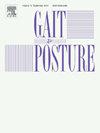利用三维kinect V2探测器建立帕金森病运动表型的综合深度学习模型
IF 2.4
3区 医学
Q3 NEUROSCIENCES
引用次数: 0
摘要
步态障碍是帕金森病(PD)的常见症状。随着人工智能(AI)技术和三维Kinect V2探测器的发展,可以更准确地表征步态障碍。我们将骨骼步态能量图像与相对距离和角度相结合,建立了PD运动表型的综合预测模型。卷积神经网络-长短期记忆(CNN-LSTM)混合深度学习模型是否提高了诊断准确性,在诊断PD的不同运动表型方面是否优于CNN或LSTM模型?方法我们实现并比较了cnn、LSTM和CNN-LSTM混合模型这三种深度学习架构。为了缓解分类不平衡,提高分类精度,采用了合成少数派过采样技术。使用随机森林(RF)和SHapley加性解释(SHAP)确定特征相关性,便于识别关键预测因子。根据统一帕金森病评定量表中选定项目的平均得分,参与者被分为三组:健康对照组、非姿势不稳定组、步态障碍组(非pigd)和pigd组。结果CNN - LSTM模型对停药状态下直线行走和转弯行走的PIGD分类预测性能最高(AUC均为0.94),其次是CNN模型(AUC分别为0.85和0.88)和LSTM模型(AUC分别为0.81和0.72)。此外,CNN-LSTM模型在服药和停药条件下都取得了最高的分类准确率。使用DeLong检验,我们比较了CNN、LSTM和混合CNN - LSTM模型在开药和停药条件下对直行和转弯行走任务的PIGD分类的ROC曲线。在所有设置下,CNN - LSTM混合模型的auc都明显高于CNN和LSTM模型。我们的研究表明,将CNN-LSTM混合深度学习模型与RF和/或基于shap的特征分析相结合,可以获得较高的分类性能。本文章由计算机程序翻译,如有差异,请以英文原文为准。
A comprehensive deep learning model for motor phenotypes of Parkinson's disease using three-dimensional kinect V2 detectors
Background
Gait impairments are common for Parkinson’s disease (PD). With the development of artificial intelligence (AI) technology and three-dimensional Kinect V2 Detectors, it is possible to enable more accurate characterization of gait impairment. We develop a comprehensive prediction model by combining skeleton gait energy image with relative distance and angle for PD motor phenotypes.
Research question
Does the hybrid convolutional neural network-long short-term memory (CNN-LSTM) deep learning model improve diagnostic accuracy and outperform CNN or LSTM models in diagnosing different motor phenotypes of PD?
Method
We implemented and compared three deep learning architectures—CNN, LSTM, and a hybrid CNN-LSTM model. To mitigate class imbalance and enhance classification accuracy, the Synthetic Minority Oversampling Technique was applied. Feature relevance was determined using Random Forest (RF) and SHapley Additive exPlanations (SHAP), facilitating the identification of key predictors. Participants were stratified into three groups—healthy controls, non-postural instability, and gait disturbance (non-PIGD), and PIGD—based on mean scores from selected items of the Unified Parkinson’s Disease Rating Scale.
Results
The CNN–LSTM model demonstrated the highest predictive performance for PIGD classification during straight and turning walking in the off-medication state (AUC = 0.94 for both), followed by the CNN (AUC = 0.85 and 0.88) and LSTM models (AUC = 0.81 and 0.72). Moreover, the CNN–LSTM model achieved the highest classification accuracy across both on- and off-medication conditions. Using the DeLong test, we compared ROC curves of the CNN, LSTM, and hybrid CNN–LSTM models for PIGD classification across straight and turning walking tasks under both on- and off-medication conditions. The hybrid CNN–LSTM model consistently achieved significantly higher AUCs than the CNN and LSTM models in all settings.
Conclusion
Our study demonstrated that using a hybrid CNN-LSTM deep learning model in combination with RF and/or SHAP-based feature analysis, can achieve high classification performance.
求助全文
通过发布文献求助,成功后即可免费获取论文全文。
去求助
来源期刊

Gait & posture
医学-神经科学
CiteScore
4.70
自引率
12.50%
发文量
616
审稿时长
6 months
期刊介绍:
Gait & Posture is a vehicle for the publication of up-to-date basic and clinical research on all aspects of locomotion and balance.
The topics covered include: Techniques for the measurement of gait and posture, and the standardization of results presentation; Studies of normal and pathological gait; Treatment of gait and postural abnormalities; Biomechanical and theoretical approaches to gait and posture; Mathematical models of joint and muscle mechanics; Neurological and musculoskeletal function in gait and posture; The evolution of upright posture and bipedal locomotion; Adaptations of carrying loads, walking on uneven surfaces, climbing stairs etc; spinal biomechanics only if they are directly related to gait and/or posture and are of general interest to our readers; The effect of aging and development on gait and posture; Psychological and cultural aspects of gait; Patient education.
 求助内容:
求助内容: 应助结果提醒方式:
应助结果提醒方式:


